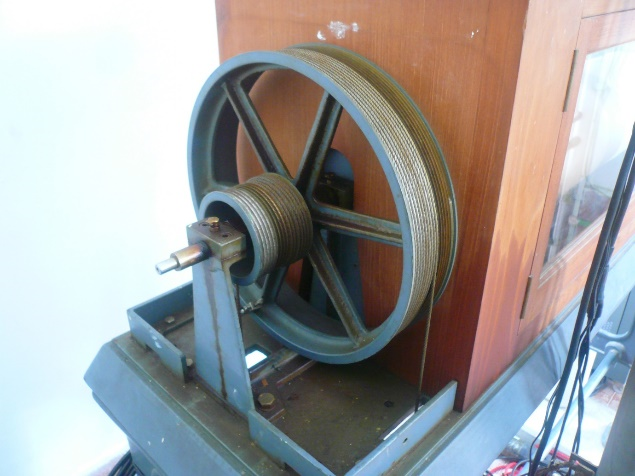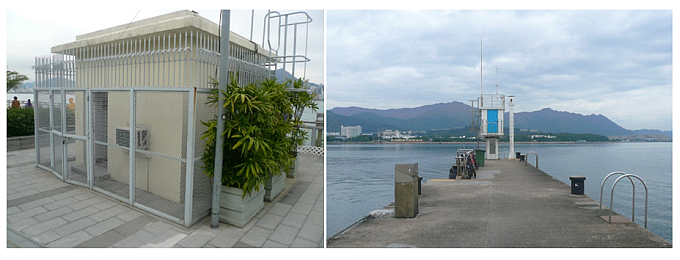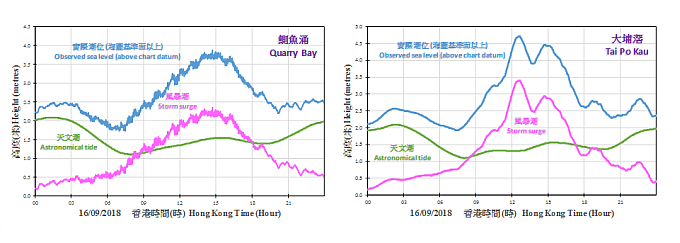How to measure tide level and storm surge
How to measure tide level and storm surge
CHAN Yan-chun
January 2019
Tide is like a beautiful symphony. The ups and downs in tide following the change in gravitational force of the Sun and the Moon form the main melody. However, meteorological factors may cause changes in the rhythm. For example in the case of rapid flooding due to storm surge, it is just like a sudden booming sound of a drum which is shocking.
A number of instruments can be used to measure tide accurately. In the past, the Observatory used a float which could stay on the sea surface, such as a hollow metal ball being placed inside the well of a tide gauge station. The metal ball will rise or fall with changes in sea level, driving the mechanical components connecting to the ball. The sea level can be determined based on the movement of the metal ball.

Figure 1 The mechanical component connected to an old type of tide gauge
With ever-improving technologies, the method of measurements continues to advance. Some modern instruments make use of the reflection of sound wave to measure the distance of the sea surface from the instrument to derive the height of the sea surface. Some others make use of a pressure transducer underwater to obtain the difference between water pressure and atmospheric pressure to derive the sea level.

Figure 2 Quarry Bay (left) and Tai Po Kau (right) tide gauge stations
In addition to the storm surge, tropical cyclones may also bring overtopping waves. The height of the splashes caused by huge waves hitting the embankment has a lot to do with the shape of the coastline, orientation, depth of the seabed, and the structure of the embankment. To reduce the effect of waves to the tidal measurement, the fluctuation due to waves will be filtered out as much as possible. The tide stations currently managed by the Observatory include Quarry Bay, Tai Po Kau, Tsim Bei Tsui, Shek Pik, Tai Miu Wan and Waglan Island. These together with other tide gauge stations managed by other government departments and organisations are made available in real time under "Tidal Information" webpage on the Observatory's website. As of end 2018, data from 12 tide gauge stations have been made available. When Severe Typhoon Mangkhut affected Hong Kong in 2018, some of the tide gauge stations measured record-breaking maximum tide level. Apart from tide gauge station in Waglan Island, which was destroyed by high winds and huge waves at that time, the remaining 5 tide gauge stations managed by the Observatory registered record-breaking storm surges. As a result of global warming, the threat of severe storm surge brought by tropical cyclones will increase. We must stay vigilant and be fully prepared to face the threat of storm surge.

Figure 3 Sea level (sum of the height of astronomical tide and storm surge above Chart Datum) recorded at the tide gauge stations at Quarry Bay and Tai Po Kau during the passage of Mangkhut.